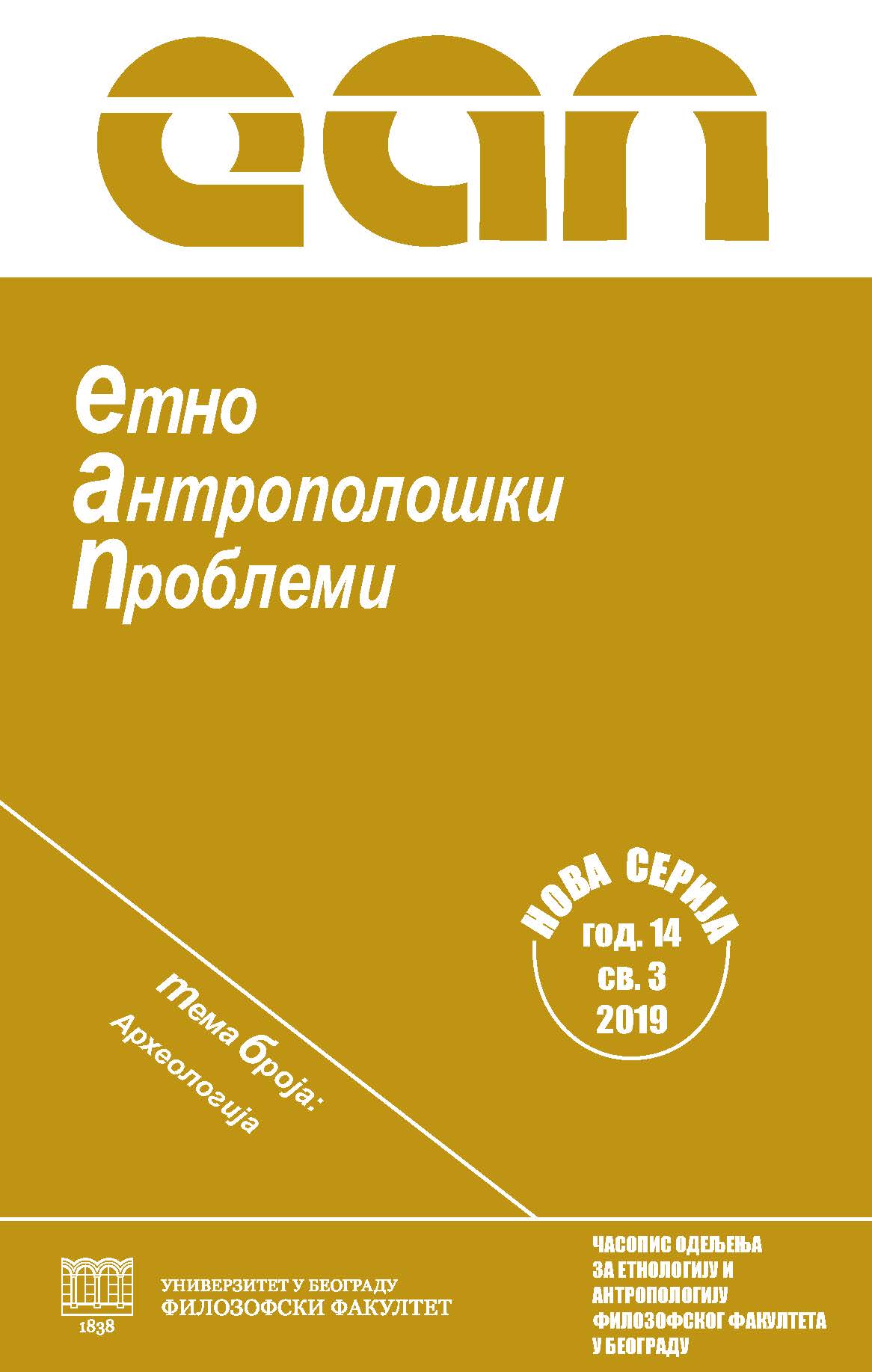The Mummy Trappings in
the National Museum in Belgrade
The Mummy Trappings in
the National Museum in Belgrade
A Reconstruction and Typological Assessment
Author(s): Branislav Anđelković, Jonathan P. EliasSubject(s): Archaeology
Published by: Филозофски факултет, Универзитет у Београду
Keywords: mummy cartonnage; helmet-type mask; collar-breast covering; a ritual unguent pouring; Fayum region; Hawara; Late Ptolemaic Period
Summary/Abstract: In July 2009 the National Museum in Belgrade received – as a donation – two elements of a funerary assemblage: a fragmented mask and a conjoined collar-breast covering. Although heavily damaged, those ancient Egyptian mummy trappings furnish modern analysts with valuable information about their fabrication and ritual employment. The mask is of helmet-type, made of gessoed linen which had been decorated with paint and gilded upon the face. The front of the mask is in relatively fair condition, but the top and rear have suffered considerably, being reduced to small fragments whose original position is difficult to determine. The mask is heavily affected by staining caused by deliberately over-poured resin, i.e. the traces of a ritual unguent pouring. The collar-breast covering is a conjoined type forming a single rectangular or rather slightly trapezoidal plaque. The collar design consists of a system of schematized floral decoration arranged in seven semicircular bands around a single semi-lunate zone. A decorative grid containing funerary motifs extends below the collar field. It consists of four horizontal registers separated by polychrome bands of colored rectangles. The whole forms a complex tapestry of protective imagery: deities, amuletic symbols and magical vignettes. The mask and the breast cover are datable to the late Ptolemaic Period (ca. 100 – 50 B.C.). The most likely place of origin is site of Hawara at the entrance to the Fayum region.
Journal: Етноантрополошки проблеми
- Issue Year: 14/2019
- Issue No: 3
- Page Range: 955-967
- Page Count: 13
- Language: English

